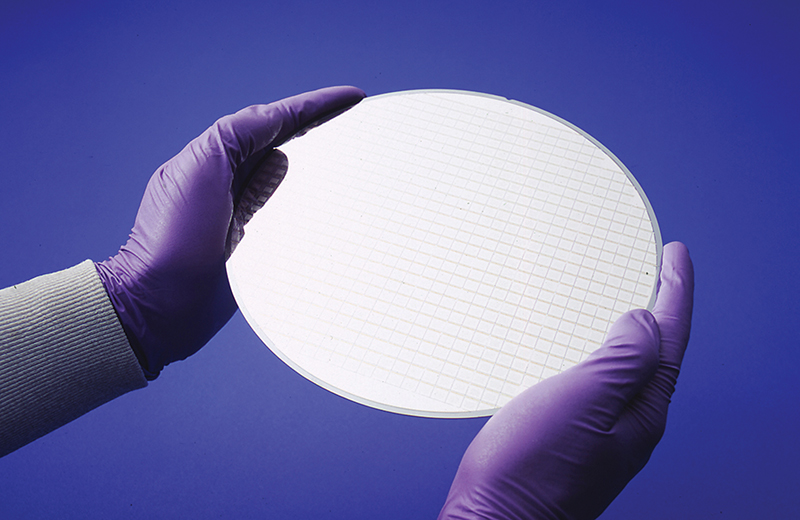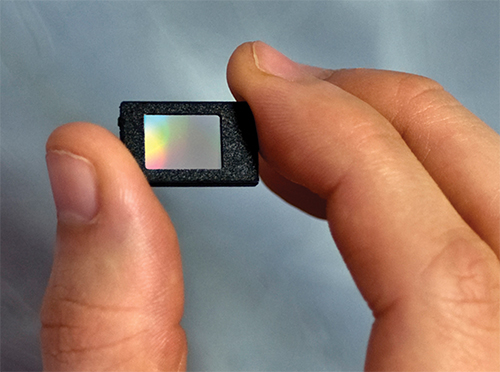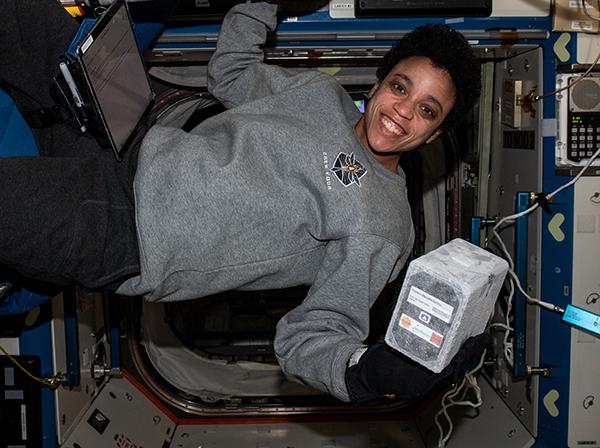
Tiny Devices Project Sharp, Colorful Images
Originating Technology/NASA Contribution
Johnson Space Center, NASA’s center for the design of systems for human space flight, began developing high-resolution visual displays in the 1990s for telepresence, which uses virtual reality technology to immerse an operator into the environment of a robot in another location. Telepresence is used by several industries when virtual immersion in an environment is a safer option, including remote training exercises and virtual prototyping, as well as remote monitoring of hazardous environments. Microdisplay panels, the tiny screens that comprise the visual displays for telepresence, are also used in some electronic viewfinders for digital video and still cameras.
Partnership
In 1993, Johnson Space Center granted a Small Business Innovation Research (SBIR) contract to Displaytech Inc., based in Longmont, Colorado, and recently acquired by Micron Technology Inc., of Boise, Idaho. Under Phase I of this contract, Displaytech began developing miniature high-resolution displays based on its ferroelectric liquid-crystal-on-silicon (FLCOS) technology. Displaytech proposed that pixels could be made small enough to fit a complete high-resolution panel onto a single integrated circuit.
Displaytech first determined how to make a panel that could reproduce grayscale using only standard complementary metal-oxide-semiconductor (CMOS) logic circuitry, which just recognizes binary values (such as a “0” for black and a “1” for white) and was not well suited for subtle shades of gray. Dr. Mark Handschy, Displaytech’s chief technology officer, explains the company perfected time-based grayscale techniques in a Phase II follow-on NASA contract: “Because our ferroelectric liquid crystal material can switch faster than the eye can follow, a sequence of displayed black and white images is averaged by the eye into a single grayscale image.”
For FLCOS panels to work well, Handschy explains, they need a smooth and shiny wafer top surface. Without this, the pixel mirrors form in the last metal layer on the semiconductor wafer, scatter, and then absorb light, resulting in a dim appearance. “The Phase II of our NASA SBIR came at a very opportune time,” Handschy says. “We were able to have an SXGA [super-extended video graphics array] CMOS backplane we’d designed under the NASA project using one of the first commercially available CMP silicon processes.” Chemical mechanical planarization (CMP) is a special technique of polishing semiconductor wafers to allow more metal layers—and smoother integrated-circuit surfaces—and was one of the factors that led to Displaytech’s success.
Another important development during the mid-1990s was the introduction of efficient blue light-emitting diodes (LEDs). Displaytech took these bright blue LEDs and combined them with red and green LEDs to illuminate its panels, rapidly sequencing through the color LEDs to create the illusion of different hues as they reflect off the panels. “In this SBIR program, we developed grayscale and color for microdisplay panels,” Handschy says, “And that was a first for us. We’ve since leveraged that into a line of products.”
Product Outcome
Displaytech uses its FLCOS technology to apply active matrix displays (individual switching elements) to a tiny silicon chip, with a final product smaller than a thumbnail. These silicon chips are essentially encased in a glass window, Handschy says. “There’s this thin layer of fast-switching liquid crystal material which allows that circuitry to drive reflective pixels on the surface of the chip.” The company’s first microdisplay panels were used in electronic viewfinders in camcorders and digital still cameras. Since 1990, Displaytech has shipped over 20 million microdisplays to some of the world’s largest consumer electronics companies, including JVC America, the Eastman Kodak Company, Olympus Corporation, Hitachi Ltd., Konica Minolta Holdings Inc., Kyocera Communications Inc., and the Hewlett-Packard Company.
Handschy says the company’s LightView products, “which all have NASA heritage,” are now being used in a new product: pocket projectors, or “pico” projectors. (A pico is a metric unit smaller than a nano.) Until recently, images and videos displayed on media players and cell phones were constrained by tiny, hard-to-see screens, making it difficult to share images, such as for a business presentation.
Currently, these pico projectors are sold as separate “accessory projectors” for existing hand-held devices, and attach via a universal serial bus cable. (Future media players and cellular phones will incorporate the pico projectors in their design and will not need any attachments for projection.) In these tiny devices, high-brightness LEDs shine through the microdisplays, magnifying the tiny images into large, colorful, sharp images 50 inches across, projected onto walls or screens large enough for groups of people to view together.
Handschy says the microdisplays are the company’s most popular products, whether for camera viewfinders or the new projectors. Currently, camcorders and digital cameras comprise the main market for Displaytech’s microdisplays, but pico projectors are soon expected to dominate the company’s sales.
“We hope to sell a lot more in the new market of pico projectors,” Handschy says. Displaytech customer 3M currently incorporates the microdisplay in its Micro Professional Projector, an accessory projector that weighs only 5.6 ounces and is sold in major office suppliers and electronics retailers. Displaytech believes sales of pico projectors may exceed $1.1 billion within 5 years. Today, the company’s research and development is funded primarily from product revenue, but Handschy says Displaytech is still open to more contracts or collaborations with NASA.
In May 2009, Displaytech and Micron Technology Inc. announced Micron’s acquisition of Displaytech to broaden its semiconductor offerings, including products for pico projectors.
Displaytech® is a registered trademark of Micron Technology Inc.
LightView™ is a trademark of Micron Technology Inc.

Displaytech Inc. uses its FLCOS technology to apply active matrix displays to a tiny silicon chip, with a final product smaller than a thumbnail. A thin layer of fast-switching liquid crystal material allows the circuitry to drive reflective pixels on the surface of the chip. Image courtesy of Displaytech Inc. and Micron Technology Inc.

The individual pixels in Displaytech’s LV-SVGA panels display a greater range of colors than previous microdisplays, due in part to technology the company developed with an SBIR from Johnson Space Center.

Ferroelectric liquid-crystal-on-silicon (FLCOS) panels need a smooth and shiny wafer top surface, which is possible with chemical mechanical planarization (CMP), a special technique of polishing semiconductor wafers to allow more metal layers—and smoother integrated-circuit surfaces. Image courtesy of Displaytech Inc. and Micron Technology Inc.













